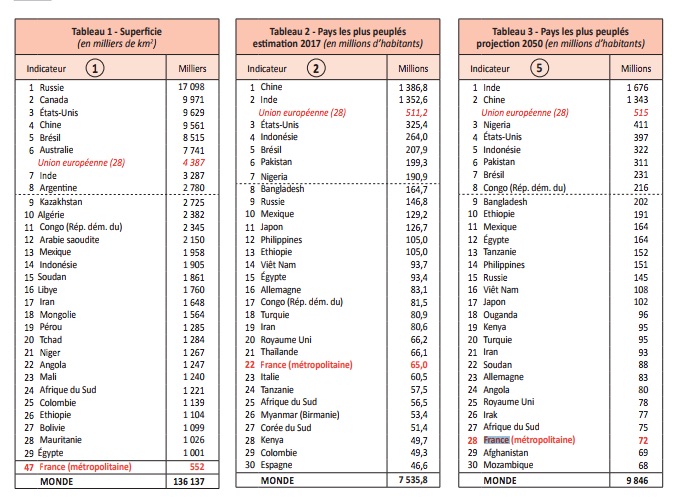In 2050, the world population will increase by 2.5 billion people despite a decline in fertility. Africa’s population will double by 2050.

In 2050, there will be many of us on Earth. Very many… The world population is expected to reach ten billion inhabitants by 2050 – that is to say tomorrow. This represents 2.5 billion more than at present. This is the conclusion of a study by INED (National Institute for Demographic Studies), which shows that this demographic increase is linked to the doubling of the population of the African continent.
“One of the great changes to come is the tremendous increase in the population of Africa”, explains this study entitled ” All countries of the world “. The African continent had 1.2 billion inhabitants in 2017; in 2050, it should reach 2.5 billion inhabitants and the population “could quadruple to reach 4.4 billion in 2100, despite AIDS”.
One in three men will live in Africa
While one in six men lives in Africa today, more than one in three will live there in a century, according to INED. The world population, multiplied by seven over the last two centuries, is expected to continue to grow “until reaching perhaps 11 billion at the end of the twenty-first century”, according to its projections.

Fertility decreases
While these numbers are impressive, there is a slowdown in population growth around the world. This phenomenon is linked to the decrease in fertility, established at 2.5 children on average per woman today in the world, against five children in 1950.
“Fertility has fallen almost everywhere but the differences remain large,” says Gilles Pison, author of the study. The lowest fertility is found in Taiwan and South Korea (1.2 children per woman), the highest in Niger (7.3 children).
” There where [la fécondité] still high, three or more children on average per woman, it is in almost all of Africa, a few countries of the Arabian Peninsula, and a strip of Asia which goes from Afghanistan, to the north of India , passing through Pakistan. This is where most of the population growth will take place in the years to come, ”predicts the author.
India will overtake China
Regarding the African population, the projections have been revised “a little upwards” due to a “rapid decline in mortality, especially among children, with great progress over the past 15 years, and a decline in fertility more. slow than in other continents ”.
The seven most populous countries on the planet, China, India, United States, Indonesia, Brazil, Pakistan and Nigeria, currently have a total of 3.93 billion inhabitants, or more than half of the world’s population.
China, the most populous country with 1.38 billion inhabitants, is neck and neck with India, 1.35 billion, which could exceed it “before 2030”, according to forecasts. The fertility rate is 2.3 children per woman in India compared to 1.8 in China.
.















